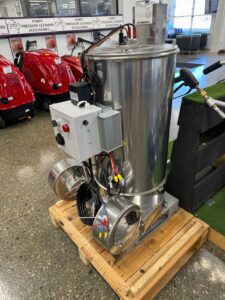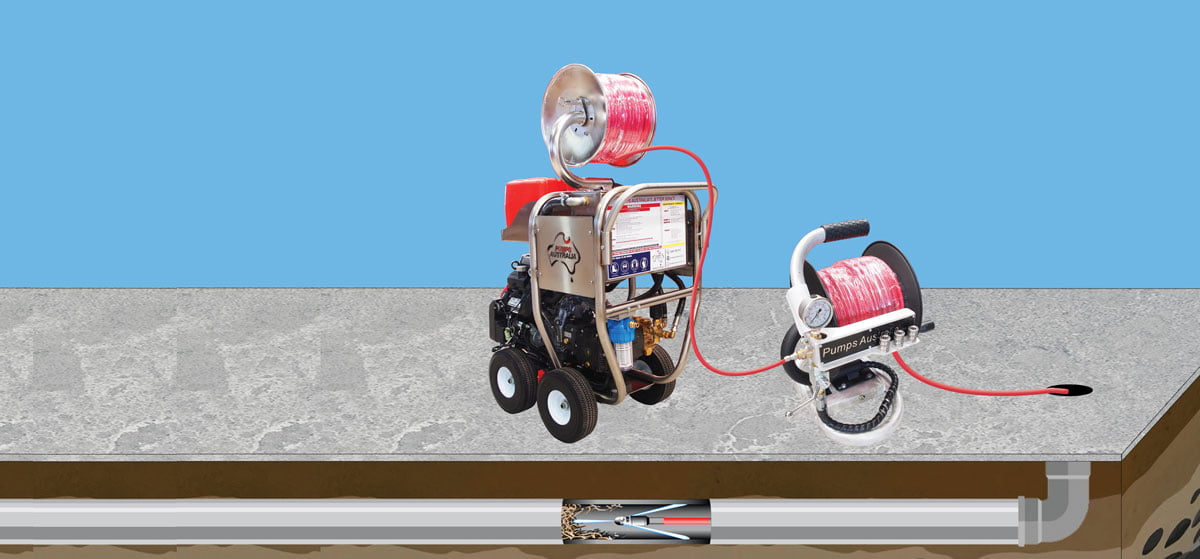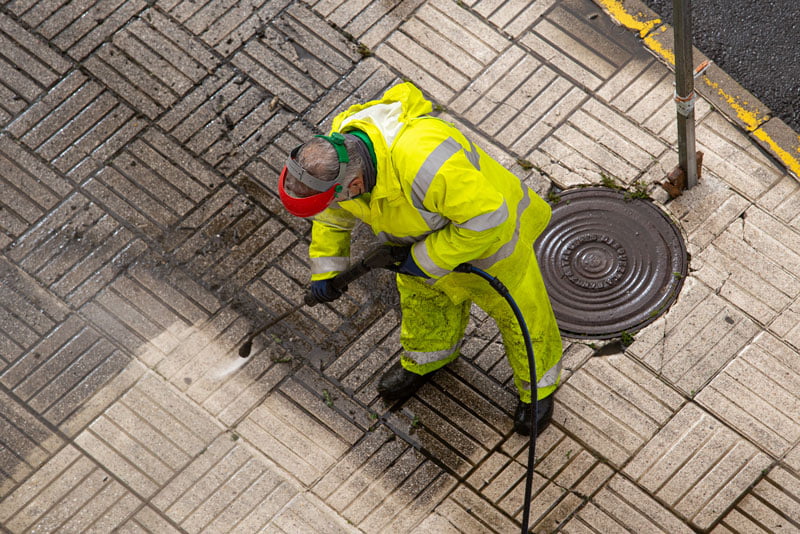
Introducing the Revolutionary Diesel-Powered Hot Water Boiler System from Pumps Australia
In the realm of high-pressure water systems, Pumps Australia is making waves with its latest innovation: the 40lpm HP Hot Water Diesel Fired Boiler. This
Before you begin operating your drain cleaner, it’s important you understand the equipment you’re working with beforehand. Drain cleaners have revolutionised the way we clear and unblock drains, sewer lines and pipes. To take advantage of its full capabilities, we’ve listed here our top 6 facts on drain cleaners to make sure you have everything you need to operate the drain cleaner efficiently.
As you move from job site to job site, the water flow and pressure will change, which will affect the performance of the drain cleaner. This is commonly caused by a poor water source that might be dirty or host contaminants and debris. Consider where you’re obtaining your water source from before you begin your job to avoid complications. Finding a reliable and clean water source will make use of the high pressure the drain cleaner will deliver.
Pressure cuts blockages
Thinner or concentrated high-pressure waterjet streams from our jetting nozzle range will have the most “cutting” power if the psi is adequate. Our Experience has shown that a 4,000 to 5,000 psi jetter with 21 lpm or higher with the right nozzle will cut out root masses, chop up hard grease, and carve out hard settled dirt. This is also why the little 240volt electric-powered units don’t cut out much at all, due to the lack of horsepower available (generally topping out at 1750psi).
Volume flushes out debris
Wider water jet streams shooting out of a jetting nozzle will have the most flushing action, and more volume also means more impact in the cleaning. If the flow(lpm) is adequate, the sheer volume of water will push and carry debris. If you want to move larger rock, bricks, grease-logs, etc., you’ll need more lpm. This is why council and contractors clean 8- to 12-inch pipes with 60 to 120 lpm, and larger pipelines with 150lpm (and beyond) trucks. This is also why little single phase (240v) electric jetters don’t flush out much debris. The lpm you will need depends greatly on the pipe diameter being cleaned and whether or not you really are required to flush/scour the line clean, or if you just need to penetrate a blockage to restore flow.
For help choosing the best drain cleaner for your job, talk with our expert team at Pumps Australia.

Now that you’ve chosen your drain cleaner unit – it’s time to select the right nozzle for your job. There’s a great variety to choose from, each offering a different outcome. There are open nozzles with smaller orifices, which allow a stream of water to shoot in front similar to a laser beam. There are also turbo spinner nozzles, which is a triple-pointed nozzle designed to push debris forward, or upstream in a pipe. In addition, there are penerator nozzles, destroyer nozzles, the turbo rat or rotating nozzle. Depending on the job you’re completing will determine the features you’ll be looking for in your nozzle. If you’re unsure which one to select, check out our range online or, speak with our knowledgeable team.
Selecting your drain hose is just as important as choosing your drain cleaner. If you have an ineffective hose, you’re not going to be able to perform your job effectively regardless of how good your drain cleaner might be. When choosing your hose for your drain cleaner, you’ll need to select a high pressure jetting hose as they can withstand high operating pressure and deliver optimal burst pressure. However, it’s vital you consider the hose size needed for your particular job. Larger hoses can be more prone to blockages for small pipes and can be impractical to use. Yet, if your hose is too small the flow won’t deliver enough power for the job at hand.

Drain cleaners are powerful pieces of machinery that can cause damages if they’re not used with care. We recommend choosing safety equipment to go with your drain cleaning equipment to ensure the user is sufficiently prepared. Safety equipment we recommend includes:
Like all equipment, it’s important to regularly care and service your drain cleaning equipment. Most vital is regularly changing your oil, descaling the heating coils and inspecting the wear and tear of your complete unit. Over time, wearing of parts is inevitable, once they have worn down it’s important to replace the parts (such as the trigger or the nozzle) to avoid safety hazards.
If you regularly use your drain cleaning equipment, consider servicing your unit quarterly. It’s best to keep consistent with services to avoid unexpected equipment issues. Talk with our team to arrange your next drain cleaning service.
Our team here at Pumps Australia are experts in drain cleaning equipment. If you have a question about your drain cleaning equipment, we have the answer. Talk with our team today and we’ll make sure you get the best pump equipment on the market.

In the realm of high-pressure water systems, Pumps Australia is making waves with its latest innovation: the 40lpm HP Hot Water Diesel Fired Boiler. This

Here in the heart of Western Australia, we understand the critical importance of efficient and reliable fire protection systems, especially in our vast and rugged

In the world of outdoor cleaning, the introduction of remote start pressure washers has sparked a revolution, combining cutting-edge technology with efficiency and convenience. Partnering
"*" indicates required fields
Copyright © 2023 Pumps Australia Pty Ltd. All rights reserved. Sitemap.
Web Design by Cloud Cartel